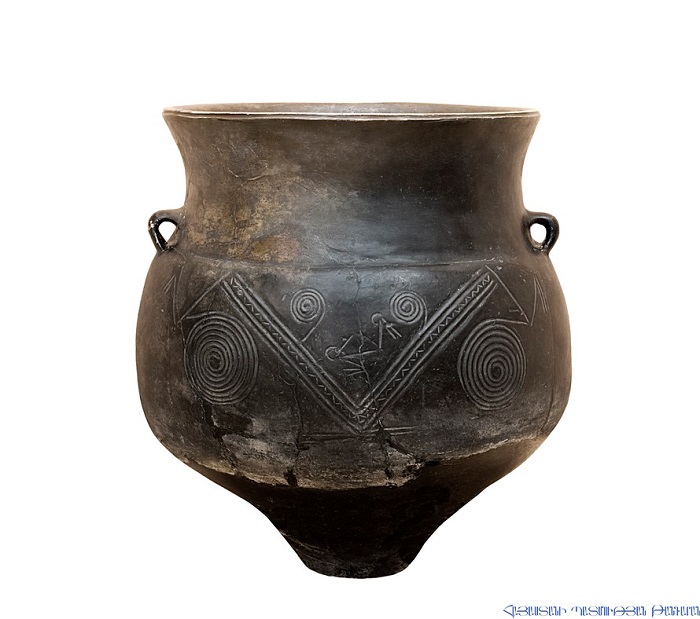
The distinctive dragon motifs as the main ornaments of an ancient Armenian artifact
The History Museum of Armenia is home to a beautiful ceramic vessel that dates back to the 29th-26th century BCE. It was discovered at the notable archaeological site, Shengavit Settlement. The pot’s primary ornamental pattern comprises wavy bands that symbolize water. Bird-headed dragons embellish the edges of the bands and are believed to be water guardians. The central part of the composition features a stork with a triangular body and an open beak, a common bird in the region and associated with the worship of the sun and the arrival of spring.
The Shengavit Settlement was inhabited during a series of settlement phases from approximately 3000 BCE cal to 2500 BCE cal in the Kura Araxes (Shengavitian) Period of the Early Bronze Age and irregularly re-used in the Middle Bronze Age.
Amongst the finds during archaeological excavations at Shengavit were chert and obsidian stone tools, mace heads, hoes, hammers, grinders, spindle whorls, spearheads, flakes, needles, pottery, and crucibles. The pottery found in the town typically has a characteristic black burnished exterior and reddish interior with either incised or raised designs.








